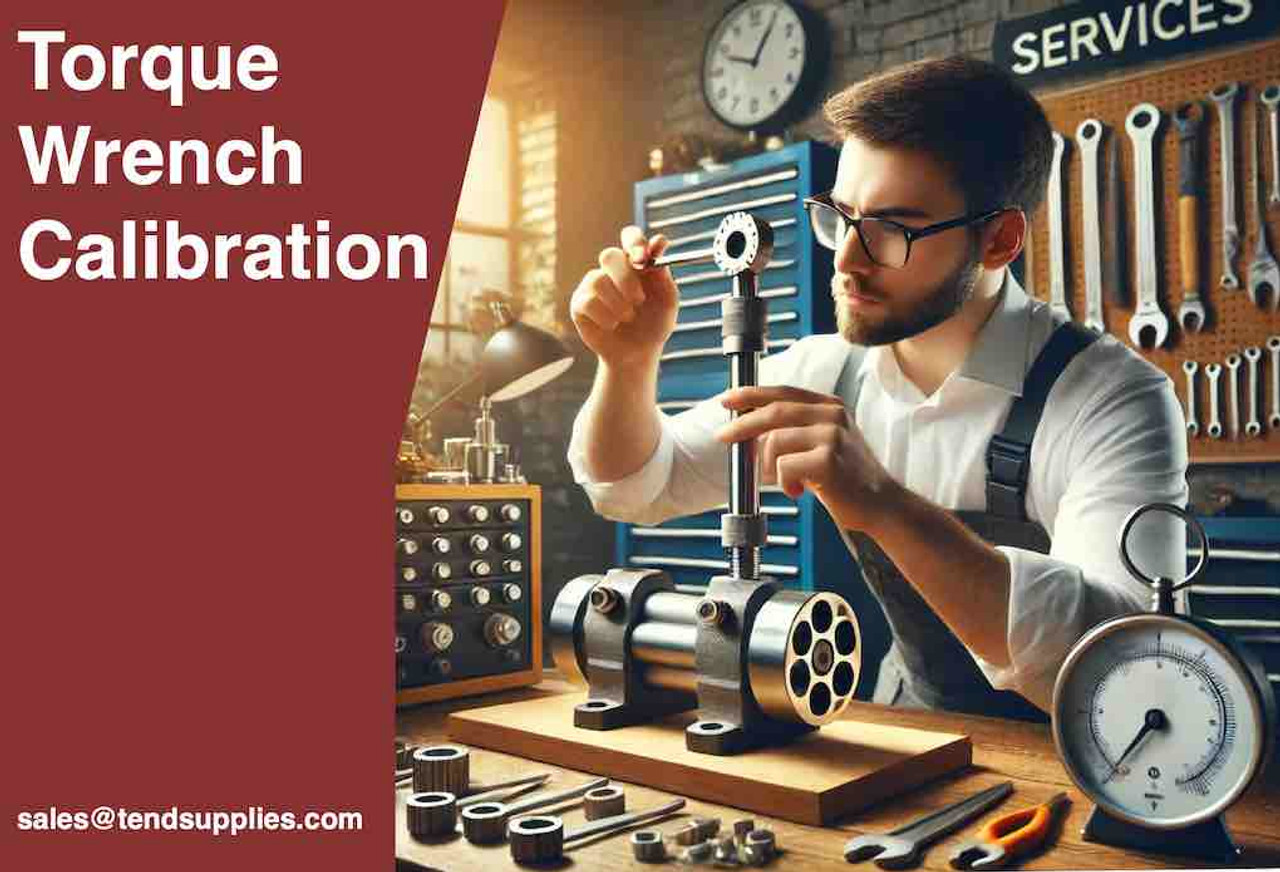Mastering Torque Wrench Maintenance: A Comprehensive Guide to Repair and Calibration
The torque wrench is an indispensable tool in precision engineering and automotive maintenance. Its ability to apply a specific torque to a fastener is crucial for ensuring the safety and longevity of countless mechanical assemblies. However, like any precision instrument, torque wrenches require regular maintenance, occasional repair, and consistent calibration to maintain their accuracy and reliability. In this comprehensive guide, we'll delve into the intricacies of torque wrench care, exploring common issues, repair techniques, and the importance of proper calibration.
Understanding Your Torque Wrench
Before diving into repair and calibration, it's essential to understand a torque wrench's basic components and functioning. Most click-style torque wrenches consist of the following essential parts:
- Handle: Used to adjust the torque setting
- Scale: Displays the current torque setting
- Ratchet head: Connects to the socket and transfers torque
- Internal spring: Provides resistance until the set torque is reached
- Lever arm: Connected to the ratchet head, it "clicks" when the set torque is achieved
- Bearing: Sits in a notch on the lever arm, allowing for the click mechanism
Understanding these components will help you diagnose issues and appreciate the importance of proper maintenance and calibration.
Common Torque Wrench Issues and Their Fixes
1. Wrench Doesn't Click
One of the most common issues with click-style torque wrenches is a failure to produce the characteristic "click" when the set torque is reached. Several factors can cause this:
- Misaligned bearing: The bearing may have slipped out of its groove. To fix this, disassemble the wrench carefully, clean and regrease the bearing, and ensure it's properly seated in the groove when reassembling.
- Worn spring: Over time, the internal spring can lose tension. In this case, replacement is usually necessary.
- Damaged lever arm: If the notch in the lever arm is worn or damaged, it may not hold the bearing properly. This typically requires professional repair or replacement.
2. Inconsistent Clicking
If your torque wrench clicks at inconsistent torque values, it could be due to:
- Dirt or debris: Disassemble and clean all components thoroughly.
- Worn bearings: Replace if necessary.
- Improper lubrication: Clean and re-lubricate all moving parts with appropriate grease.
3. Difficulty Adjusting Torque Settings
When you struggle to adjust the torque settings, consider these potential issues:
- Damaged threads: The adjustment mechanism's threads may be stripped or damaged. Professional repair is often necessary.
- Seized components: Lack of use or exposure to moisture can cause internal components to seize. Disassembly, cleaning, and lubrication may solve the issue.
4. Visible Damage or Wear
Any visible damage to the wrench body, ratchet head, or scale should be addressed promptly. While minor cosmetic issues might not affect performance, structural damage can compromise accuracy and safety.
DIY Repair vs. Professional Service
While some minor issues can be addressed through DIY repairs, it's crucial to recognize when professional service is necessary. Here are some guidelines:
DIY-friendly tasks:
- Cleaning and lubricating the wrench
- Realigning a misplaced bearing
- Tightening loose external screws
Tasks best left to professionals:
- Replacing internal springs or bearings
- Repairing damaged ratchet mechanisms
- Addressing issues with the torque adjustment mechanism
- Calibration (unless you have access to proper calibration equipment)
Remember, improper repairs can lead to inaccurate torque readings, which can be dangerous in critical applications. When in doubt, it's always best to consult with a professional repair service like TendSupplies.com.
The Importance of Calibration
Calibration is the most critical aspect of torque wrench maintenance. Even a perfectly functioning wrench can provide inaccurate readings if it's not properly calibrated. Here's why calibration matters:
- Accuracy: Calibration ensures that the torque wrench provides accurate readings across its entire range.
- Consistency: Regular calibration helps maintain consistent performance over time.
- Safety: In critical applications, applying the correct torque is crucial for safety and structural integrity.
- Compliance: Many industries have regulatory requirements for tool calibration.
When to Calibrate
As a general rule, torque wrenches should be calibrated:
- Annually
- After approximately 5,000 uses
- If the wrench is dropped or experiences a significant impact
- If you suspect any inaccuracy in the readings
The Calibration Process
Professional calibration typically involves the following steps:
- Visual inspection: The wrench is examined for any visible damage or wear.
- Functional check: The basic operation of the wrench is verified.
- Calibration testing: The wrench is tested at multiple points across its range using certified calibration equipment.
- Adjustment: If necessary, the wrench is adjusted to meet specified accuracy standards.
- Final testing: The wrench is retested to confirm accuracy after adjustments.
- Documentation: A calibration certificate is issued detailing the results and traceability to national standards.
While it's possible to perform an essential calibration at home using weights and a lever arm, professional calibration services like those offered by TendSupplies.com provide a higher level of accuracy and certification.
Preventative Maintenance Tips
To keep your torque wrench in top condition and extend its lifespan, consider these preventative maintenance tips:
- Store properly: Keep your torque wrench in a clean, dry place. Many wrenches come with a storage case - use it!
- Reset to minimum: After use, always reset the torque setting to its minimum value to relieve spring tension.
- Clean regularly: Wipe down your wrench after each use and perform a thorough cleaning periodically.
- Avoid overloading: Never exceed the maximum torque rating of your wrench.
- Use as intended: Torque wrenches are precision instruments. Don't use them as breaker bars or general-purpose wrenches.
- Handle carefully: Avoid dropping your torque wrench or exposing it to extreme temperatures.
Choosing the Right Repair and Calibration Service
Choosing the right service provider is crucial when it's time for professional repair or calibration. Here are some factors to consider:
- Accreditation: Look for services accredited by recognized bodies like A2LA (American Association for Laboratory Accreditation).
- Experience: Choose a provider with extensive experience in torque tool repair and calibration.
- Range of services: Opt for a service that can handle various torque tools and brands.
- Turnaround time: Consider how quickly you need your tool back in service.
- Warranty: Check if the service provider offers a warranty on their repairs.
- Customer service: Good communication and customer support are invaluable when dealing with precision tools.
The TendSupplies.com Advantage
At TendSupplies.com, we pride ourselves on offering comprehensive torque wrench repair and calibration services that meet the highest industry standards. Here's what sets us apart:
- Expertise: Our technicians are skilled in repairing and calibrating various torque tools, including pneumatic, electric, and hydraulic models.
- Quick turnaround: Most repairs are completed in less than a week, minimizing your downtime.
- Quality assurance: We use only factory OEM parts and offer a 6-month repair warranty.
- Comprehensive service: We handle everything from minor adjustments to major overhauls.
- Convenience: Send your tools to us, or take advantage of our on-site service options.
- Transparent process: We provide detailed estimates before any work begins and keep you informed throughout the repair process.
Conclusion
A well-maintained and accurately calibrated torque wrench is an invaluable asset in any toolbox. By understanding common issues, performing regular maintenance, and seeking professional repair and calibration services, you can ensure that your torque wrench remains a reliable precision instrument for years.
Remember, while some minor maintenance tasks can be performed at home, professional services offer the expertise, equipment, and certification necessary for critical applications. When in doubt, it's always best to consult with experts like those at TendSupplies.com. Don't let a malfunctioning or inaccurate torque wrench compromise your work quality or safety. Invest in proper maintenance, timely repairs, and regular calibration to get the most out of your precision tools.
Call to Action: Ready to ensure your torque wrench is in peak condition? Contact Tend Industrial Supplies Services and Solutions or sales@tendsupplies.com to schedule your repair or calibration service today. Our expert team is standing by to help you maintain the accuracy and reliability of your critical tools.
FAQs
Q: How do I know if my torque wrench needs calibration?
A: Signs that your torque wrench may need calibration include inconsistent clicking, visible wear or damage, or a gap of more than a year since its last calibration. If you're working on critical applications, it's best to stick to a regular calibration schedule even if the wrench seems to be functioning correctly.
Q: Can I calibrate my torque wrench at home?
A: While it's possible to perform a basic calibration at home using weights and a lever arm, this method is not as accurate or reliable as professional calibration. Home calibration should only be used as a rough check between professional calibrations. For critical applications, always rely on certified calibration services.
Q: How long does professional torque wrench repair and calibration typically take?
A: At TendSupplies.com, most repairs and calibrations are completed within a week. However, the exact timeframe can vary depending on the complexity of the repair and the current workload. We always strive to provide the fastest turnaround possible without compromising on quality.
Q: Are digital torque wrenches more accurate than mechanical ones?
A: Digital torque wrenches can offer higher precision and are often easier to read, but they're not inherently more accurate than high-quality mechanical wrenches. Both types require regular calibration to maintain accuracy. The choice between digital and mechanical often comes down to personal preference and specific application requirements.
Q: How should I store my torque wrench to maintain its accuracy?
A: To maintain accuracy, store your torque wrench in a clean, dry place, preferably in its original case. Always reset the torque to its lowest setting before storage to relieve spring tension. Avoid exposing the wrench to extreme temperatures or humidity; never store it where it might be knocked or dropped.
Remember, proper care and regular professional maintenance are key to ensuring the longevity and accuracy of your torque wrench. For all your torque wrench repair and calibration needs, trust the experts at TendSupplies.com. Contact us at sales@tendsupplies.com to learn more about our services and how we can help you maintain your precision tools.










